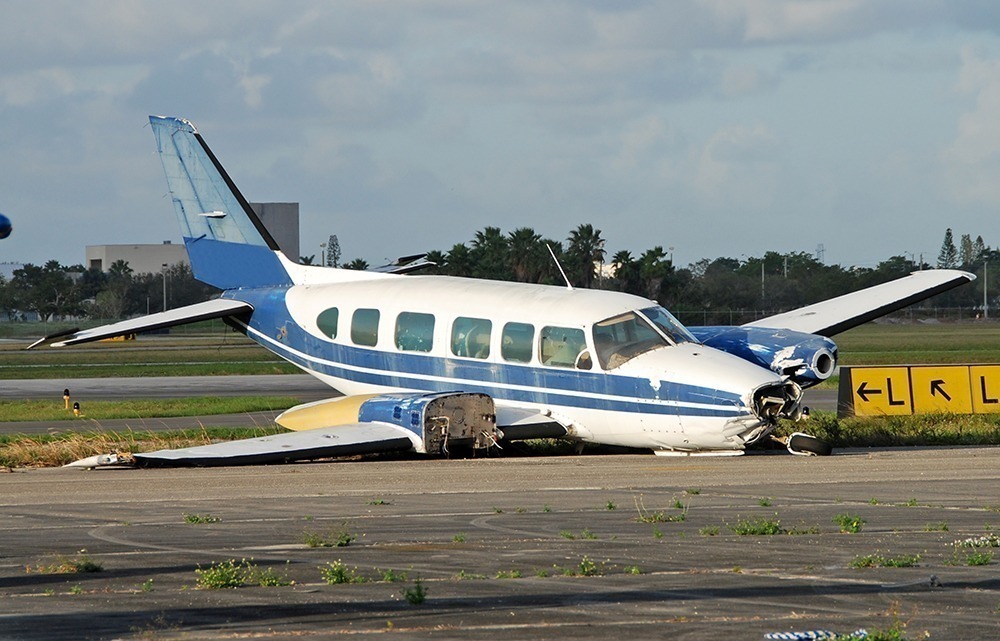Why Pursuing a Small Aircraft Injury Claim Requires Specialized Legal Expertise
Share:
When you step aboard a commercial flight, you’re well aware of the strict safety measures in place to keep you safe at 35,000 feet. But what about when you fly in a small aircraft—whether it’s a private plane or a chartered flight? The rules, regulations, and risks are very different, and if you’re injured in a small aircraft accident, your path to justice can be far more complex.
Small aircraft accidents might not make the headlines like major airline crashes, but the injuries and aftermath can be just as devastating. In fact, navigating a personal injury claim after a small aircraft crash presents a unique set of challenges. From figuring out who’s at fault to understanding the investigation process, the legal hurdles can seem overwhelming. But don’t worry—we’re here to break it down.
Let’s take a closer look at what happens if you’re injured in a small aircraft accident and how you can pursue compensation for your injuries.
The Unique Challenges of Small Aircraft Accidents
Small aircraft accidents are more common than you might think. Whether you’re in a private plane, a small chartered flight, or a light sport aircraft, the risks are real—and the consequences can be severe. But pursuing a personal injury claim in these cases is much more complex than in a commercial aviation crash. Here’s why:
Liability Isn’t Always Clear-Cut: In commercial aviation accidents, the liability is often straightforward. Airlines, flight crews, and maintenance organizations are generally held responsible, and they have significant insurance to cover damages. But when it comes to small aircraft accidents, things get trickier. There are multiple parties who could be at fault, such as:
The Pilot: A mistake made by a private pilot—whether due to poor judgment, lack of training, or negligence—could be the cause of the crash.
The Aircraft Owner: If the plane wasn’t properly maintained, or the owner failed to meet FAA safety requirements, they could be held liable.
The Aircraft Manufacturer or Mechanics: Malfunctions due to faulty equipment or improper maintenance could shift responsibility to the manufacturer or maintenance team.
With so many parties involved, identifying exactly who is at fault—and holding them accountable—requires expert legal guidance.
The Investigation Process Can Be Lengthy: In major commercial aviation accidents, the National Transportation Safety Board (NTSB) leads a thorough investigation, and the causes are often clear. Small aircraft accidents, however, can be harder to investigate. NTSB resources are stretched thin, and the findings may take longer to come to light. The cause of the crash—whether it’s pilot error, mechanical failure, or something else—can be harder to pinpoint without a thorough and well-funded investigation.
This prolonged investigation process can delay your case, making it harder to seek timely compensation. It can also complicate your claim, as you’ll need to rely on expert testimony and evidence collection.
Insurance Coverage May Not Be Enough: In the world of commercial aviation, insurance companies are prepared for massive payouts. But small aircraft often come with much lower insurance policies—sometimes only covering the minimum required by law. The compensation you’re entitled to may fall short of covering your medical bills, lost wages, and pain and suffering, especially if your injuries are severe.
Worse, many small aircraft owners only carry the bare minimum insurance coverage, meaning you could be facing out-of-pocket expenses or a long battle to secure a fair settlement.
Proving Negligence is More Complicated: One of the biggest hurdles in small aircraft accident claims is proving negligence. In commercial aviation, fault is often easier to establish. However, with small aircraft, you’ll have to prove that the aircraft owner, pilot, or manufacturer was negligent. For instance:
Pilot Error: Proving that the pilot made a mistake requires expert testimony, flight logs, and sometimes even weather reports. If the pilot’s actions (or inactions) caused the crash, you must show that they violated standard practices or failed to act in a reasonable manner.
Mechanical Failure: If the aircraft malfunctioned, proving that the aircraft owner or mechanic failed to properly maintain the plane requires evidence like maintenance records and expert testimony.
Proving negligence can be an uphill battle, but with the right legal team, it’s not impossible.
What You Should Do After a Small Aircraft Accident
If you’ve been injured in a small aircraft accident, here’s what you should do to protect your health and your legal rights:
1. Get Medical Attention Immediately: Even if you feel fine, you need to see a doctor. Some injuries, such as internal bleeding or whiplash, might not show symptoms right away but could lead to long-term damage. Immediate medical care also strengthens your case later on.
2. Report the Accident: Make sure the accident is reported to the FAA and NTSB. Their investigation is critical, even though it may take time. In the meantime, take as many photos as possible, and gather the contact information of any witnesses.
3. Contact an Experienced Personal Injury Lawyer: Navigating a personal injury claim after a small aircraft accident can be overwhelming. You need a lawyer who specializes in aviation accidents and understands the intricacies of pursuing compensation in these types of cases. They will know how to investigate the incident, gather evidence, and fight for the compensation you deserve.
4. Document Everything: Keep meticulous records of all medical treatments, expenses, and lost wages. You’ll also want to track any communications with insurance companies and involved parties. The more documentation you have, the stronger your case will be.
Getting Compensation for Your Injuries
You are entitled to compensation if you’ve been injured due to the negligence of others. Depending on the circumstances of your accident, you may be able to file a claim against:
- The pilot if their error caused the crash.
- The aircraft owner if they failed to maintain the plane properly or didn’t follow safety regulations.
- The aircraft manufacturer or mechanic if faulty parts or poor maintenance were to blame.
Your attorney will gather evidence, work with aviation experts, and fight to ensure that you receive fair compensation for your injuries, medical bills, lost wages, and pain and suffering.
Final Thoughts
Injuries sustained in small aircraft accidents can be catastrophic, and while the process of seeking compensation may seem daunting, it is far from impossible. With the right legal help, you can navigate the complexities of your case and hold the responsible parties accountable. Don’t let a small aircraft accident derail your life—reach out to DuFault Law today for expert representation.
Take Action Now – Get the Compensation You Deserve!
Injuries from small aircraft accidents can be life-changing, and navigating the legal complexities of these cases requires expert guidance. If you’ve been injured in a private plane or small aircraft accident, don’t wait—your right to compensation may be time-sensitive.
Contact DuFault Law today for a free consultation with our experienced aviation injury attorneys. We’ll help you understand your options and fight for the compensation you need to recover and move forward.
Call us at (239) 422-6400 or email contact@dufaultlaw.com to get started on your case today.



Comments are closed